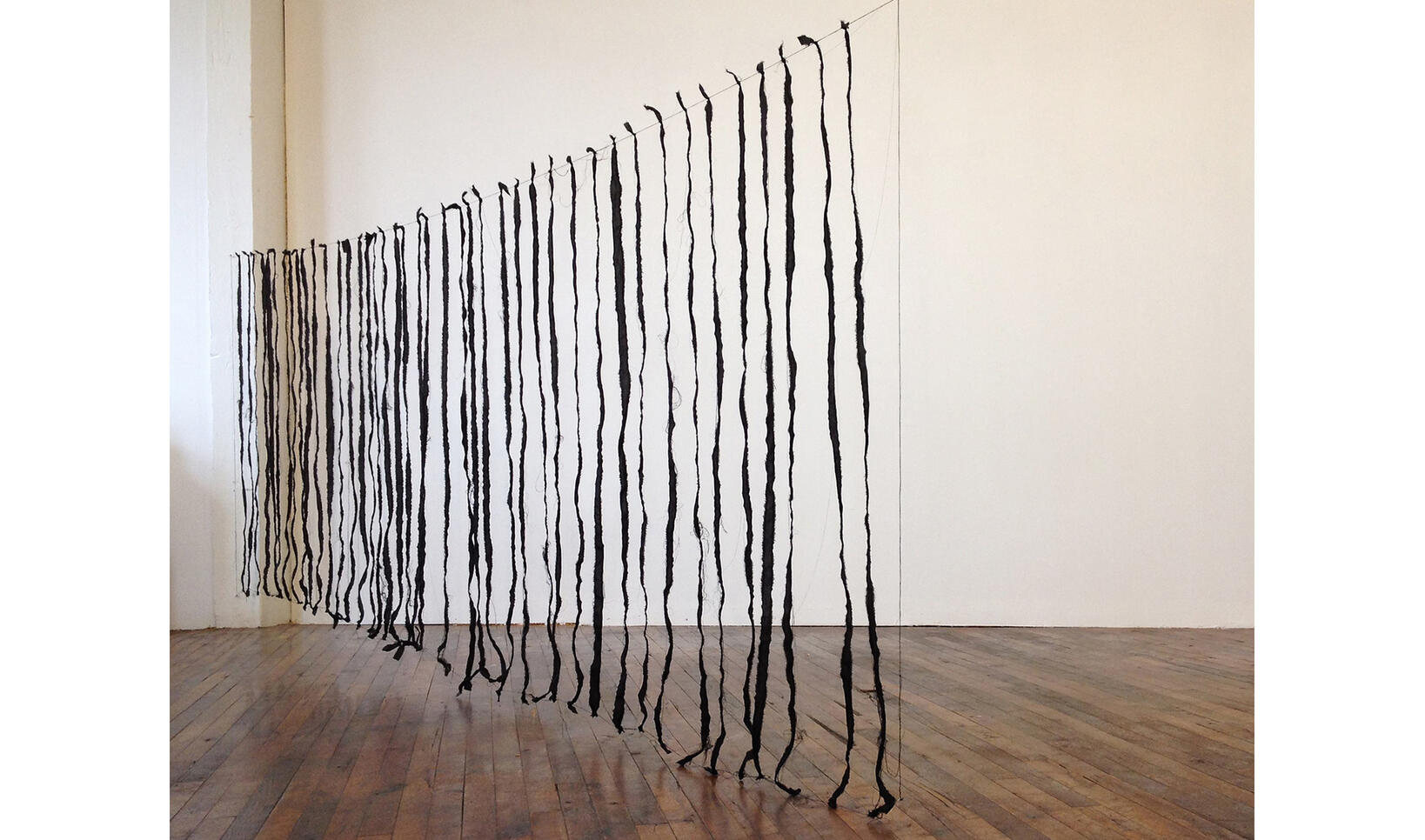
In this interview, Sarah Kusa reveals how empathy, vulnerability, and power affect her studio practice, her artistic influences, and the challenges of working in 3D.
You describe that vulnerability and power are central themes to your work. Could you talk about how your sculptures/installations/forms explore these seemingly opposing ideas?
I think of vulnerability and power as different evidences of the same thing—being alive. They seem like opposite ideas, but they come from that same source and coexist in fascinating ways. Curiosity about their interplay and tension drives my work. My pieces can take a pretty wide range of forms, but there’s a common thread of the questions behind them. I am exploring what might make us vulnerable or powerful in a given moment: connection, division, flexibility, rigidity, protection, and so on. My work is coming through a human lens but isn’t limited to being about the human experience. Some of my pieces are abstract bodies that essentially represent something alive, and some of my pieces are meant to affect how our own bodies move or feel. We all embody both states, and I’m constantly thinking about how that plays out.
Your work uses everyday materials that are often metaphoric or symbolic in nature. I’m curious how you choose which materials to work with or do they choose you? What are your thoughts about material as metaphor? Is this something you think about when you are working?
Materials do often choose me. I experiment with a broad variety of things, but usually what I end up working with is something that elicits a strong tactile response for me. Then I know it has a kind of intimacy to it and I can relate it to the body in some way, perhaps as a type of skin or membrane. I like working with things that feel rudimentary, as if they are so basic that they can’t be simplified much more. With simple materials, there’s an opportunity to do more with less that lends itself to exciting transformation.
The way material most often becomes metaphor in my work is when the material itself can come across as both vulnerable and powerful and has that duality. An example is the way a simple string is pliable and can easily be cut—a vulnerability of sorts. But string can also form a powerful line when it’s under tension, so strong it becomes something that can control or choke. I’m very aware that my pieces can be crushed, cut apart, or unraveled with little effort. That’s part of it for me.
What artists are you currently looking at?
I look at certain artists for intersections my work has with theirs, and those artists fluctuate based on the specific projects I’m working on. It feels daunting to try to name them all, since there are so many. There are other artists I look at for how they harness their individual curiosities, which are very different from mine, but excite me for the array of ways each artist engages her own questions. A few of these artists are Ann Hamilton, Jen Bervin, Nina Katchadourian and Julianne Swartz. I appreciate how their individual approaches to their work continue to expand wildly.
What’s the most challenging part of your studio practice?
It’s the classic 3D-artist problem: needing more and more space to spread out. My studio work has a way of expanding to fill available space. Finding room for newly finished work can be tricky when it’s sculpture or an installation. I have work hidden away in my studio, my garage, and my basement as I try to clear my studio for the next project.
How has winning the Jerome fellowship affected and/or changed your work?
It’s been really encouraging to get a nod to keep going in my investigations. Artists work in obscurity most of the time, and to keep chipping away at our questions despite a lack of feedback or a roadmap is the great challenge for any artist. It is a huge gift to feel more freedom to keep doing that work.
What do you want a viewer to walk away with after experiencing your work?
At its core, my work is aimed at empathy. We never really know what people carry with them on a daily basis in terms of burdens or challenges. There’s posturing to present ourselves in a certain way in the world, but at the end of the day, we are all made of the same stuff. We share the same fears. I want to extend a kind of intimacy in my work that allows people to feel less guarded—maybe even more forgiving with themselves and others.